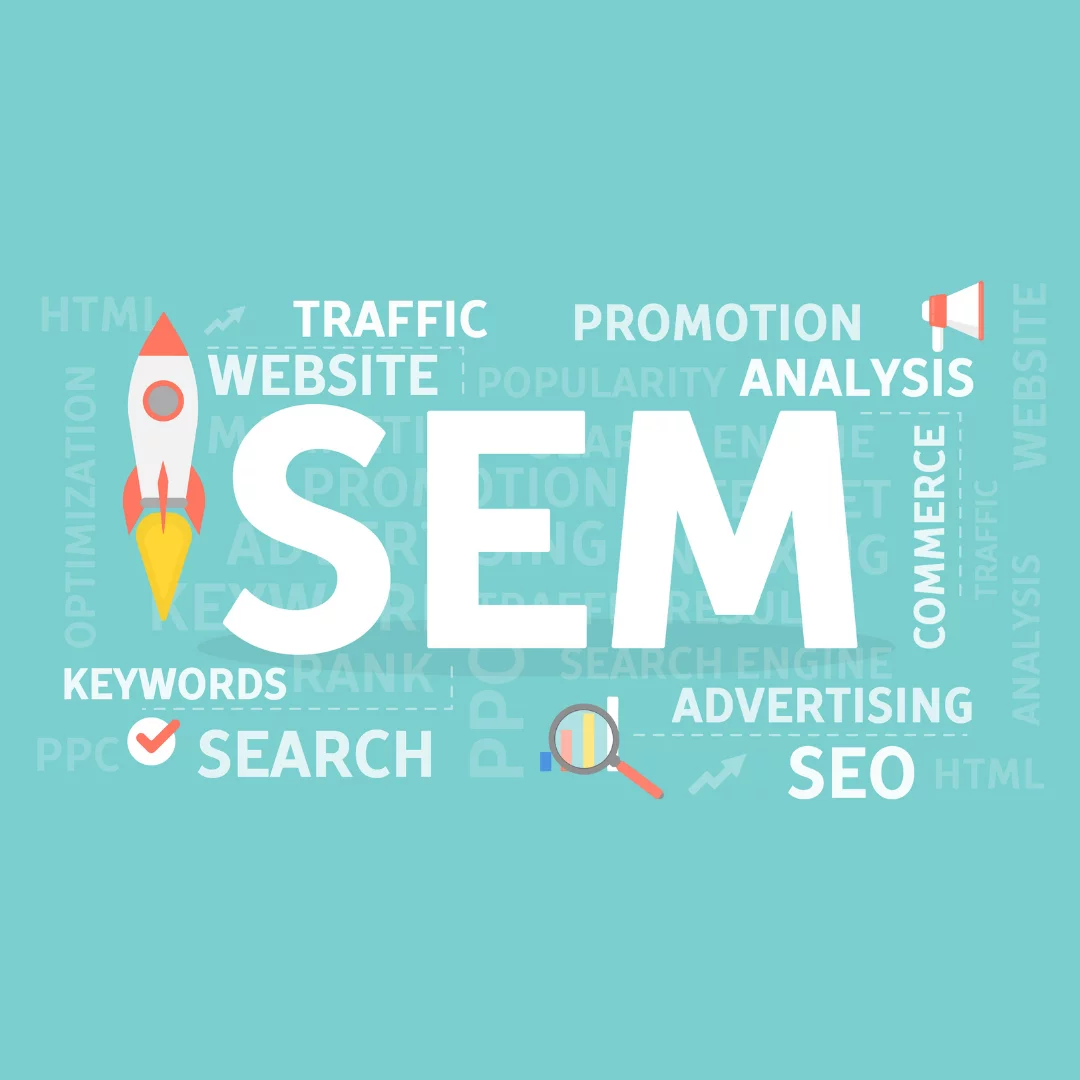An Effective Way to Grow Business
Search engine marketing is an effective method to grow your business, even when the competition is fierce. You want your brand to be in front of millions of other businesses, which requires the best SEM marketing strategies. Let’s focus on what SEM is, how it can benefit you, and where you should turn for help.
What is SEM?

SEM means a great deal to your business. Search engine marketing promotes your business with paid advertisements that show up on search engine results pages (SERPs). These search engine ads are also known as pay-per-click ads, and they come in a variety of different formats.
How Search Engine Marketing Works

SEM marketing can be seen on search engine result pages in the form of advertisements, either text-based or carousel-based, ran through software such as Google Ads or Bing Ads. Here are some great search engine marketing basics to follow.
- Conduct keyword research and select a set of keywords related to their website or product.
- Select a geographic location for the ad to be displayed within.
- Create a text-based ad to display in the search results.
- Bid on a price they are willing to pay for each click on their ad.
Why Search Engine Marketing is Important
If you plan to compete in today’s world, you can’t overlook the value of search engine marketing. It’s one piece of the marketing pie and a significant slice at that. While it can’t be the only avenue you explore, it should be part of any company’s digital marketing strategy. SEM marketing helps new customers find you, and it helps to overtake your top competitors.
Reach Your Customers with Our SEM / PPC Advertising Approach

If you need SEM marketing help, Reach Marketing Pro is ready to walk with you. We take a unique approach to SEM/PPC marketing. Here are the steps in our SEM approach.
1
Strategy Phase
2
Research Phase
We dig deeper into your industry and get a better understanding of your competitors.
3
Development Phase
We create the campaign for your review.
4
Launch Phase
We begin the campaign and work on sending traffic to your site.
5
Observation Phase
We watch and observe the results for better analysis.
6
Data Analysis Phase
We show you what’s working and what’s not.
7
Optimization Phase
We continue to optimize for better results.
The SEM Process
Our SEM services include both creating a brand new Ads account for your business or taking over your existing account and managing that account for you.
For new SEM account creation, this is what the process looks like.
1
Campaign Setup
Setting up ad campaigns.
2
Keyword Selection
Choosing the proper keywords & negative keywords.
3
Targeting Options
Selecting targeting options such as audiences, demographics, geotargeting/geographics, and more.
4
Ad Creation
Developing compelling ads for text-based ads, banner ads, and display/retargeting ads.
5
Conversion Tracking
Setting up conversion tracking such as for submissions, call tracking, chat conversations / engagements, and in-store visits.
6
A/B Testing
A/B testing ads and landing pages.
7
Campaign Optimization
Optimizing campaigns to maximize the KPIs that are most important to your business, whether that is maximizing conversions or increasing your “share of voice” through impression share.
For those with an existing Ads account or SEM strategy that need management or optimization, the process looks more like the following.
1
Campaign Review
Review past and current campaigns and structure to ensure best practices are being implemented and utilized.
2
Analyze Setup
Analyzing settings, geotargeting options, and conversion tracking metrics to guarantee everything is set up correctly.
3
Improve Metrics
Increase quality scores, lower CPC, and gather more marketing qualified leads at a price point in adherence to your budget.
4
Align Strategies
Aligning your paid SEM strategies with your organic SEO strategy.
5
Bid Adjustment
Adjust bids based on keyword performance and show up for the keywords that will get you leads.
6
Support & Optimization
Ongoing support, optimization, and reporting to improve results over time.
Key Performance Indicators

KPIs for SEM / PPC
Key Performance Indicators help you track the success of your search engine marketing results. Here are 10 KPIs that your company should be monitoring.
1
Clicks
All conversions begin with a click. The more clicks you have, the better chances there are to make a sale.
2
Click-Through-Rate (CTR)
The CTR is determined by dividing the number of clicks the campaign received by the total impressions.
3
Quality Score
This metric is from Google, telling you how relevant the ad content is.
4
Cost-Per-Click (CPC)
You want to know what you paid for every click so you can optimize and lower your cost in the future.
5
Cost-Per-Acquisition (CPA)
Additionally, it helps to know what was spent for every conversion. The less you pay, the better your campaign.
6
Conversion Rate (CVR)
This metric is the entire purpose of a campaign. You want every click to convert for success.
7
Impression Share
Also known as CPM, this metric shows you how many people saw the advertisement.
8
Average Position
This metric determines what ranking position your advertisement placed on the search engine pages.
9
Budget Attainment
This figure shows how closely your team came within the set advertising budget.
10
Lifetime Value
This is an estimation that shows what the campaign was worth over the long term.
SEM Keyword Research

As you look at search engine marketing examples, you see the strategy is different based on your budget and goals. For a smaller budget, it’s essential to choose the keywords that you bid on carefully. You need to consider each keyword’s search intent and only include keywords in your ad groups that will produce results. If you haphazardly choose keywords that won’t convert, you will waste your money. You can extend your reach further into other keywords in your ad groups when you have a larger PPC budget, choosing keywords that show intent for any section of the sales funnel. These projects are best for reaching the consumer at every moment of their buyer’s journey.

